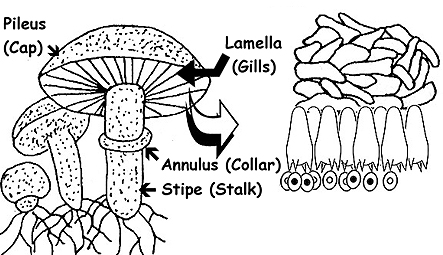 |
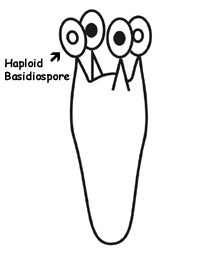 |
| Figure 1: Various stage of mushroom development (right) and mature, haploid basidiospores on basidia on the surface of the lamella. | Figure 2: Mature basidium with haploid basidiospore that are typically of different mating strains. |
Mushroom Life Cycle
The mushroom basidiocarp is typically composed of a stipe that elevates the basidiocarp above the substrate, a pileus and in some species a partial veil that encloses and protects the lamella as the basidia and basidiospores are developing (Fig 1-2).
 |
 |
| Figure 1: Various stage of mushroom development (right) and mature, haploid basidiospores on basidia on the surface of the lamella. | Figure 2: Mature basidium with haploid basidiospore that are typically of different mating strains. |
The mushroom life cycle is similar to that of the filamentous Ascomycota in that following monokaryons formation, there is a prolonged dikaryon stage prior to to karyogamy. However, a significant difference is that sexual organs are absent. It is thought that sexual organs of Basidiomycetes were lost during their evolution and that vegetative hyphae have taken over the function of sexual organs. Dikaryon formation begins with the fusion of hyphal cells between compatible monokayons (Fig. 3). The monokaryon stage of the Basidiomycotina is short-lived and fusion with a compatible monokaryon occurs soon after basidiospore germination. The dikaryon is the mycelium that produces the basidiocarp, and as in the Ascomycota, only certain dikaryotic cells will function in basidia and basidiospore formation, e.g. dikaryotic cells in the hymenium (Fig. 4).
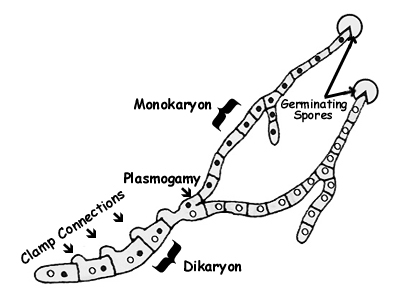 |
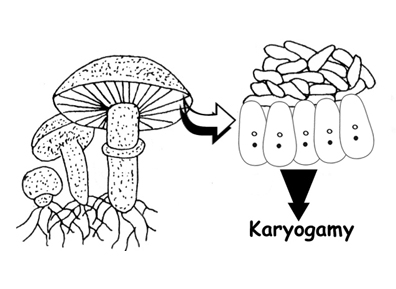 |
| Figure 3: Dikaryon formation resulting from fusion of a pair of compatible monokaryons. Clamp connects may or may not be present. | Figure 4: Formation of basidiocarp. Hymenial cells (right), in lamella will undergo karyogamy and develop basidia and basidiospores |
The terminal cells develop into basida and is where karyogamy will take place to form the zygotes. The zygote is the only diploid stage in the life cycle. The zygote immediately undergoes meiosis to form four haploid nuclei, and the future basidiospores are formed as blown out structures, on the tips of sterigmata, of the basidium. The nuclei migrates into the blown out areas which may then be properly referred to as basidiospores (Fig. 5).
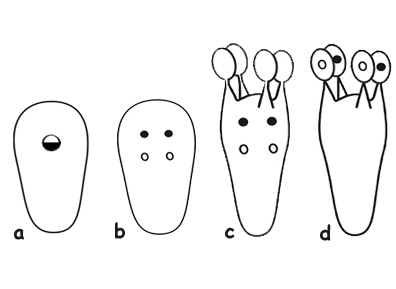 |
| Figure 5: The zygote 5a is the only diploid stage. Four nucleate stage after meiosis 5b. Formation of basidiospores, but nuclei have not migrated into spores 5c. Nuclear migration into basidiospores 5d. |
Unlike other life cycles that we have covered, with only some variations, the sequence of events in the mushroom life cycle is truly representative of the class Basidiomycetes.